 Go to A-Z Databases: Books & eBooks to search for more eBooks. Must be on campus or login with your COM account for off campus access.
Go to A-Z Databases: Books & eBooks to search for more eBooks. Must be on campus or login with your COM account for off campus access.
Want more on finding books or eBooks? Try our How to Use Books & eBooks guides.
-
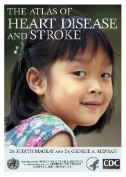 Atlas of Heart Disease and Stroke
Cardiovascular disease now ranks as the world's top cause of death, causing one third of all deaths globally. Heart disease can no longer be seen as the problem of overworked and overweight middle-aged men in developed countries. In today's world, women and children too are at risk. Already 75% of all CVD deaths occur in the poorer regions of the world and this is likely to increase in the future.
Atlas of Heart Disease and Stroke
Cardiovascular disease now ranks as the world's top cause of death, causing one third of all deaths globally. Heart disease can no longer be seen as the problem of overworked and overweight middle-aged men in developed countries. In today's world, women and children too are at risk. Already 75% of all CVD deaths occur in the poorer regions of the world and this is likely to increase in the future.
-
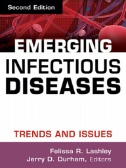 Emerging Infectious Diseases: Trends and Issues
This new work updates the highly regarded first edition...and is equally excellent. It offers a wealth of timely information about a variety of emerging and reemerging infections...This is an excellent reference for anyone interested in emerging infections, and will be a valuable resource for health science students, especially those in nursing and public health....Highly recommended. Upper-level undergraduates through professionals/practitioners.'--Choice Emerging, re-emerging, and antibiotic-resistant infectious diseases continue to increase at an alarming rate throughout the world.
Emerging Infectious Diseases: Trends and Issues
This new work updates the highly regarded first edition...and is equally excellent. It offers a wealth of timely information about a variety of emerging and reemerging infections...This is an excellent reference for anyone interested in emerging infections, and will be a valuable resource for health science students, especially those in nursing and public health....Highly recommended. Upper-level undergraduates through professionals/practitioners.'--Choice Emerging, re-emerging, and antibiotic-resistant infectious diseases continue to increase at an alarming rate throughout the world.
-
-
 Human Diseases and Conditions
Designed primarily for use by high school students and young adults in the general population seeking authoritative health information, Human Diseases and Conditions, 3rd ed. is the revised and updated edition of Charles Scribnerâ??s Sonsâ?? well received Human Diseases and Conditions (2009). Offering in-depth coverage of all areas of health and disease, Human Diseases and Conditions, 3rd ed. offers current and accurate information on approximately 450 diseases and conditions. This edition includes nearly 75 new and 360 completely reviewed and revised articles. The topics covered include infectious diseases, many cancers, chronic and acute physical and psychological conditions, newly emerging and reemerging diseases, public health issues, and issues of interest to the young adult audience (eating disorders, sports injuries, growth, and puberty). Behavioral health is covered as thoroughly as physical health. In addition, the comprehensiveness of 425 photos, informative illustrations, and charts thoroughly enhances the already-rich textual information. A glossary of key terms, bibliography, list of organizations, and a comprehensive two-level subject index is also included.
Human Diseases and Conditions
Designed primarily for use by high school students and young adults in the general population seeking authoritative health information, Human Diseases and Conditions, 3rd ed. is the revised and updated edition of Charles Scribnerâ??s Sonsâ?? well received Human Diseases and Conditions (2009). Offering in-depth coverage of all areas of health and disease, Human Diseases and Conditions, 3rd ed. offers current and accurate information on approximately 450 diseases and conditions. This edition includes nearly 75 new and 360 completely reviewed and revised articles. The topics covered include infectious diseases, many cancers, chronic and acute physical and psychological conditions, newly emerging and reemerging diseases, public health issues, and issues of interest to the young adult audience (eating disorders, sports injuries, growth, and puberty). Behavioral health is covered as thoroughly as physical health. In addition, the comprehensiveness of 425 photos, informative illustrations, and charts thoroughly enhances the already-rich textual information. A glossary of key terms, bibliography, list of organizations, and a comprehensive two-level subject index is also included.
-
 Immunology: Clinical Case Studies and Disease Pathophysiology
26 real-life cases illustrate the applications of basic immunology in clinical settings May be utilized alone or as a companion to Immunology: A Short Course, 7th Edition by Richard Coico and Geofftry Sunshine (ISBN 9781118396919) Each case study is introduced by clearly written descriptions of the major immunological disorders Full colour photographs and illustrations complement complete presentation of real data Includes complete set of problems and discussion questions for each chapter
Immunology: Clinical Case Studies and Disease Pathophysiology
26 real-life cases illustrate the applications of basic immunology in clinical settings May be utilized alone or as a companion to Immunology: A Short Course, 7th Edition by Richard Coico and Geofftry Sunshine (ISBN 9781118396919) Each case study is introduced by clearly written descriptions of the major immunological disorders Full colour photographs and illustrations complement complete presentation of real data Includes complete set of problems and discussion questions for each chapter
-
 Just the Facts: Pathophysiology
This quick-reference handbook provides the essential "must-have" pathophysiology facts that nurses need in day-to-day patient care. The book covers more than 130 diseases organized by body system, with separate chapters on genetics and fluid and electrolyte disorders. Information is presented in a format that is ideal for rapid access, with bullets, graphic illustrations, and flow charts that demonstrate pathophysiologic processes. Signs and symptoms are clearly linked to pathophysiologic changes in each disorder. Each chapter begins with a brief review of pathophysiologic concepts. An appendix provides a quick-scan chart of less common disorders.
Just the Facts: Pathophysiology
This quick-reference handbook provides the essential "must-have" pathophysiology facts that nurses need in day-to-day patient care. The book covers more than 130 diseases organized by body system, with separate chapters on genetics and fluid and electrolyte disorders. Information is presented in a format that is ideal for rapid access, with bullets, graphic illustrations, and flow charts that demonstrate pathophysiologic processes. Signs and symptoms are clearly linked to pathophysiologic changes in each disorder. Each chapter begins with a brief review of pathophysiologic concepts. An appendix provides a quick-scan chart of less common disorders.
-
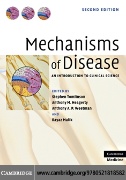 Mechanisms of Disease: An Introduction to Clinical Science
To reflect the changing face of undergraduate and postgraduate medical education, this new edition emphasises the principles of disease processes and their underlying mechanisms, bringing the content up to date with the latest developments from the fields of molecular and cellular biology. The focus is on describing the fundamental features of pathophysiological processes with examples to illustrate the similar mechanisms underlying apparently diverse clinical conditions. By understanding the cellular interactions in one disease area, similar principles can be applied to other disease groups and to the scientific basis of medical management and treatment strategies. Throughout, the student is encouraged to evaluate and integrate the evidence critically, developing skills for self-directed learning and the application of knowledge. To further encourage the reader to integrate the theory with clinical practice, each chapter concludes with a series of clinical scenarios and MCQs, with answers provided.
Mechanisms of Disease: An Introduction to Clinical Science
To reflect the changing face of undergraduate and postgraduate medical education, this new edition emphasises the principles of disease processes and their underlying mechanisms, bringing the content up to date with the latest developments from the fields of molecular and cellular biology. The focus is on describing the fundamental features of pathophysiological processes with examples to illustrate the similar mechanisms underlying apparently diverse clinical conditions. By understanding the cellular interactions in one disease area, similar principles can be applied to other disease groups and to the scientific basis of medical management and treatment strategies. Throughout, the student is encouraged to evaluate and integrate the evidence critically, developing skills for self-directed learning and the application of knowledge. To further encourage the reader to integrate the theory with clinical practice, each chapter concludes with a series of clinical scenarios and MCQs, with answers provided.
-
 Pathophysiology Made Incredibly Visual
Publisher's Note: Products purchased from 3rd Party sellers are not guaranteed by the Publisher for quality, authenticity, or access to any online entitlements included with the product. Know the how and why of common conditions--and assess them accurately--with the newly updated Pathophysiology Made Incredibly Visual, 3rd Edition. Fully illustrated in the popular Made Incredibly Visual style, this essential guide offers easy-to-follow explanations for the causes and mechanisms of numerous common disorders, listing symptoms and indications for each. Use this as the perfect study guide for the NCLEX® or certification exam, to support class materials, and to absorb the pathophysiology principles every nurse needs to know. Absorb the expert wisdom and insights of this invaluable guide . . . Walks you through the development stages of numerous diseases and disorders, illustrating their cellular process, symptoms, and effects on tissue and organs Explains cell parts and their functions, as well as cell division, adaptation, injury, and stress and disease Hundreds of photos, illustrations, and diagrams explaining key concepts and providing clear direction on how to recognize common conditions Supports accurate diagnosis and treatment - Common disorders for each major body system, such as: Cardiovascular - Acute coronary syndromes, aortic aneurysms, cardiomyopathy Respiratory - ARDS, asthma, chronic bronchitis, lung cancer Neurologic - Alzheimer's, cerebral aneurysm, migraine headaches Gastrointestinal - Cholecystitis, cirrhosis, Crohn's disease Musculoskeletal - Carpal tunnel syndrome, herniated disk, osteoarthritis Hematologic - Anemia, leukemia, sickle cell disease Immune - AIDS, allergic rhinitis, rheumatoid arthritis Endocrine - Adrenal hypofunction, diabetes mellitus, metabolic syndrome Renal - Acute renal failure, acute tubular necrosis, pyelonephritis Integumentary - Acne, burns, pressure ulcers Reproductive - Breast, cervical, ovarian, and prostate cancer Special chapter features: Vision Quest - End-of-chapter quizzes in the form of puzzles, riddles, and multiple-choice questions, to help you retain vital information Risky business - Risk factors to be aware of while treating each condition How it happens - The physiological process that creates a particular condition What to look for - A list of symptoms for each condition Age-old story - Discusses how a condition develops and presents, according to the patient's age Memory board - Visual tricks that help you remember vital concepts and key treatments
Pathophysiology Made Incredibly Visual
Publisher's Note: Products purchased from 3rd Party sellers are not guaranteed by the Publisher for quality, authenticity, or access to any online entitlements included with the product. Know the how and why of common conditions--and assess them accurately--with the newly updated Pathophysiology Made Incredibly Visual, 3rd Edition. Fully illustrated in the popular Made Incredibly Visual style, this essential guide offers easy-to-follow explanations for the causes and mechanisms of numerous common disorders, listing symptoms and indications for each. Use this as the perfect study guide for the NCLEX® or certification exam, to support class materials, and to absorb the pathophysiology principles every nurse needs to know. Absorb the expert wisdom and insights of this invaluable guide . . . Walks you through the development stages of numerous diseases and disorders, illustrating their cellular process, symptoms, and effects on tissue and organs Explains cell parts and their functions, as well as cell division, adaptation, injury, and stress and disease Hundreds of photos, illustrations, and diagrams explaining key concepts and providing clear direction on how to recognize common conditions Supports accurate diagnosis and treatment - Common disorders for each major body system, such as: Cardiovascular - Acute coronary syndromes, aortic aneurysms, cardiomyopathy Respiratory - ARDS, asthma, chronic bronchitis, lung cancer Neurologic - Alzheimer's, cerebral aneurysm, migraine headaches Gastrointestinal - Cholecystitis, cirrhosis, Crohn's disease Musculoskeletal - Carpal tunnel syndrome, herniated disk, osteoarthritis Hematologic - Anemia, leukemia, sickle cell disease Immune - AIDS, allergic rhinitis, rheumatoid arthritis Endocrine - Adrenal hypofunction, diabetes mellitus, metabolic syndrome Renal - Acute renal failure, acute tubular necrosis, pyelonephritis Integumentary - Acne, burns, pressure ulcers Reproductive - Breast, cervical, ovarian, and prostate cancer Special chapter features: Vision Quest - End-of-chapter quizzes in the form of puzzles, riddles, and multiple-choice questions, to help you retain vital information Risky business - Risk factors to be aware of while treating each condition How it happens - The physiological process that creates a particular condition What to look for - A list of symptoms for each condition Age-old story - Discusses how a condition develops and presents, according to the patient's age Memory board - Visual tricks that help you remember vital concepts and key treatments
-
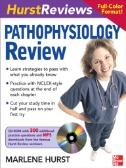 Pathophysiology Review
Based on Marlene Hurst's popular nursing seminars that train over 30,000 students annually, "Pathophysiology Review" is unlike any other resource as it explains how to apply critical thinking and test-taking skills rather than how to re-learn course content. Marlene shows you how to "think on your feet" in order to succeed on your Pathophysiology exams. Features: A complete Pathophysiology course toolkit - from the world's most sought after speaker on nursing exam preparation Skill-building questions, answers, and explanations at the end of each chapter Concise, easy-to-remember strategies that cut study time in half Eye-catching full-color format Marlene Moments - Marlene's humorous anecdotes of common student mistakes that offer a light-hearted look at how new nurses learn to succeed.
Pathophysiology Review
Based on Marlene Hurst's popular nursing seminars that train over 30,000 students annually, "Pathophysiology Review" is unlike any other resource as it explains how to apply critical thinking and test-taking skills rather than how to re-learn course content. Marlene shows you how to "think on your feet" in order to succeed on your Pathophysiology exams. Features: A complete Pathophysiology course toolkit - from the world's most sought after speaker on nursing exam preparation Skill-building questions, answers, and explanations at the end of each chapter Concise, easy-to-remember strategies that cut study time in half Eye-catching full-color format Marlene Moments - Marlene's humorous anecdotes of common student mistakes that offer a light-hearted look at how new nurses learn to succeed.
-
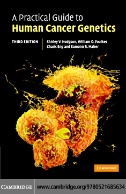 Practical Guide to Human Cancer Genetics
The 2006 third edition of this very successful book provides a comprehensive and practical guide to the diagnosis and management of inherited disorders conferring susceptibility to cancer. Issues discussed include risk assessment, genetic counselling, predictive testing and organisation of a cancer genetics service. A full reference list gives access to background literature. With molecular information, screening guidelines and management advice, this new edition will provide geneticists and clinicians in all disciplines with an invaluable resource for screening, managing and advising patients.
Practical Guide to Human Cancer Genetics
The 2006 third edition of this very successful book provides a comprehensive and practical guide to the diagnosis and management of inherited disorders conferring susceptibility to cancer. Issues discussed include risk assessment, genetic counselling, predictive testing and organisation of a cancer genetics service. A full reference list gives access to background literature. With molecular information, screening guidelines and management advice, this new edition will provide geneticists and clinicians in all disciplines with an invaluable resource for screening, managing and advising patients.
-
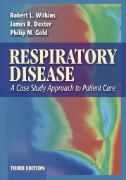 Respiratory Disease: A Case Study Approach to Patient Care
Now edited by a pulmonologist, the 3rd edition is still one of the most well-written texts for students learning to understand the assessment and treatment of patients with respiratory disease. Each chapter begins with a background of selected disorders, followed by a case study with questions and answers designed to stimulate critical thinking skills.
Respiratory Disease: A Case Study Approach to Patient Care
Now edited by a pulmonologist, the 3rd edition is still one of the most well-written texts for students learning to understand the assessment and treatment of patients with respiratory disease. Each chapter begins with a background of selected disorders, followed by a case study with questions and answers designed to stimulate critical thinking skills.
-
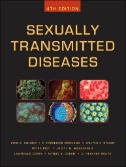 Sexually Transmitted Diseases
The most respected, all-in-one global STD reference - now in full-color With a level of detail and scientific rigor that no other text can match, Sexually Transmitted Diseases takes you through all aspects of STDs, from epidemiology to diagnosis and public health measures. Featuring an exciting new full-color format, the fourth edition of Sexually Transmitted Diseases delivers the most encyclopedic overview of the clinical, microbiological, and public health aspects of STDs, including HIV.
Sexually Transmitted Diseases
The most respected, all-in-one global STD reference - now in full-color With a level of detail and scientific rigor that no other text can match, Sexually Transmitted Diseases takes you through all aspects of STDs, from epidemiology to diagnosis and public health measures. Featuring an exciting new full-color format, the fourth edition of Sexually Transmitted Diseases delivers the most encyclopedic overview of the clinical, microbiological, and public health aspects of STDs, including HIV.
 Go to A-Z Databases: Books & eBooks to search for more eBooks. Must be on campus or login with your COM account for off campus access.
Go to A-Z Databases: Books & eBooks to search for more eBooks. Must be on campus or login with your COM account for off campus access.![]()